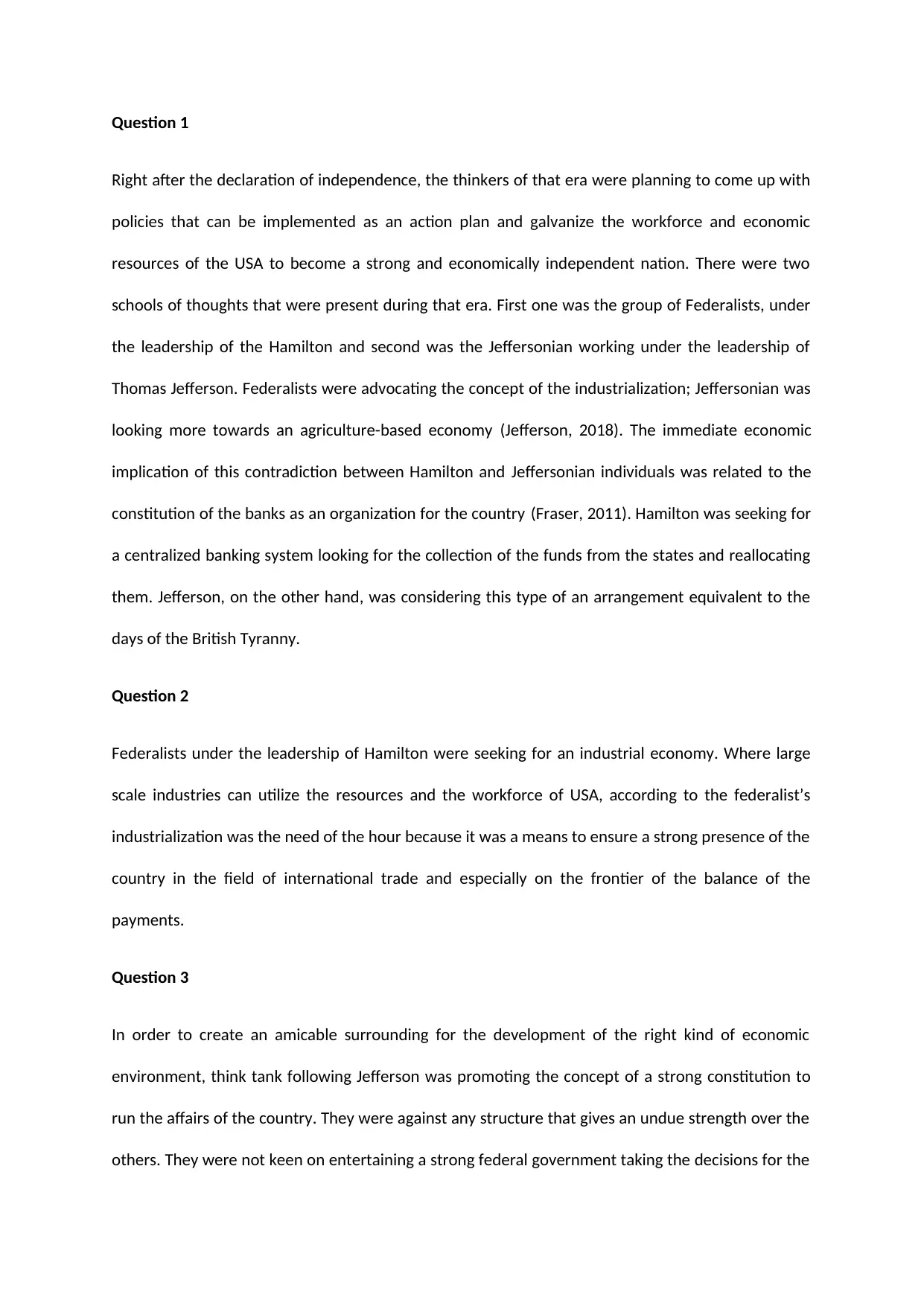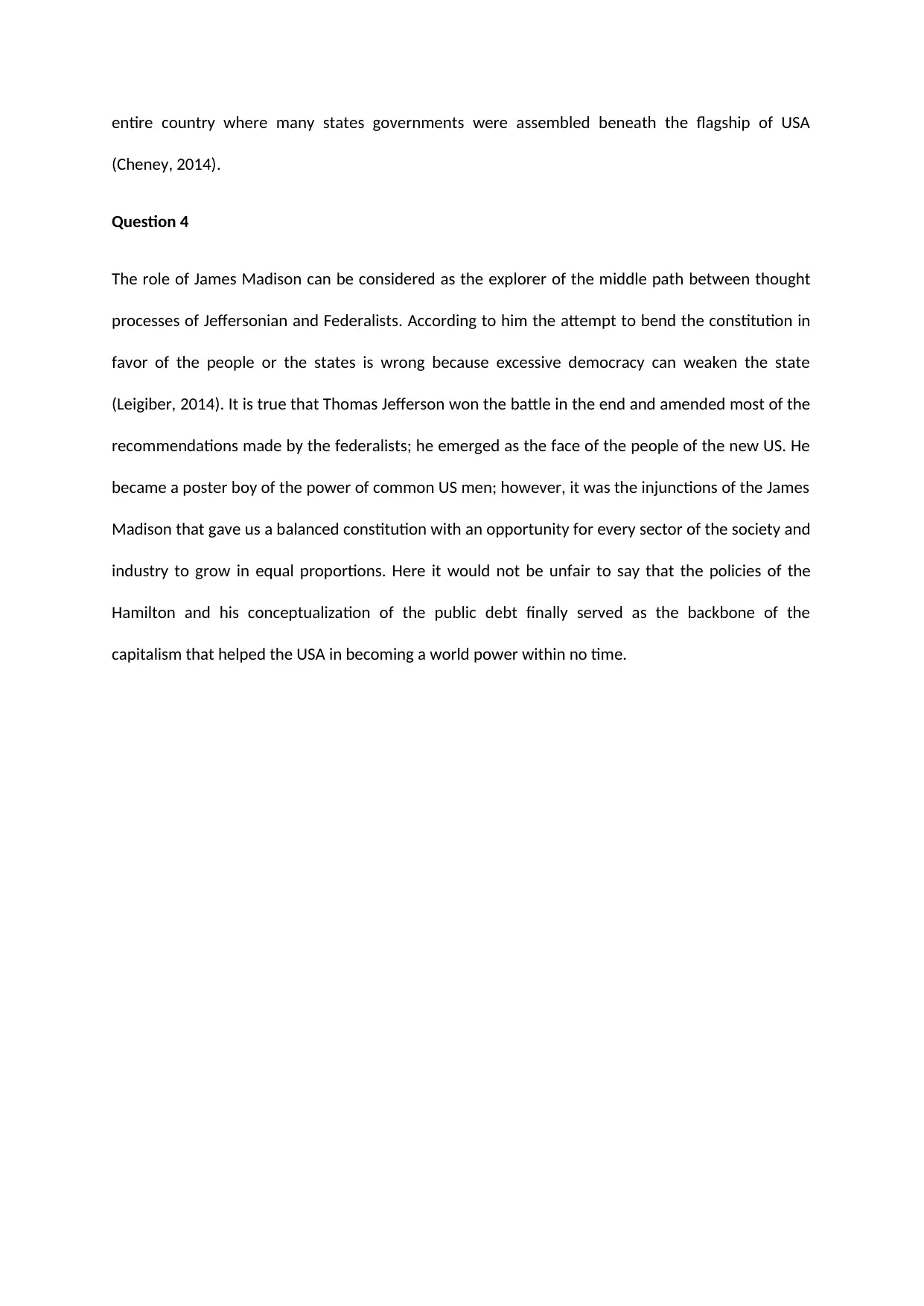Federalists and Jeffersonians: Shaping the Future of the Young USA
VerifiedAdded on 2023/04/22
|4
|622
|372
Essay
AI Summary
This essay explores the contrasting visions of the Federalists, led by Hamilton, who advocated for industrialization and a strong central bank, and the Jeffersonians, led by Thomas Jefferson, who favored an agriculture-based economy and a weaker federal government. The conflict between these ideologies had immediate economic implications, particularly regarding the establishment of a national banking system. While Hamilton sought a centralized banking system, Jefferson viewed it as a form of tyranny. James Madison played a crucial role in finding a middle ground, balancing the constitution to allow for equal growth across various sectors. Ultimately, while Jefferson's ideals resonated with the common people, Hamilton's policies on public debt laid the foundation for American capitalism and its rise to global power. The essay also includes a response to another student's forum post, with agreements and disagreements noted.
1 out of 4









![[object Object]](/_next/static/media/star-bottom.7253800d.svg)